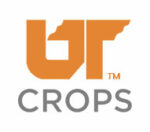Evaluating the Optimal Nitrogen Fertilizer Application Rates in No-Till Dryland Corn
Nutifafa Adotey, Assistant Professor & Soil and Nutr. Magt Specialist and Ryan Blair, Extension Area Specialist III and County Standardized Trials Specialist - University of Tennessee
Introduction
A major challenge with nitrogen (N) management in corn production is to determine the appropriate amount of N to attain optimum productivity with minimal environmental risks to other ecosystem functions. Under-application or excessive loss of nitrogen (N) can reduce yields in corn. While over-application of nitrogen can result in economic loss and potential environmental consequences.
Research Methodology
To evaluate the optimum N rate for dryland corn production in Tennessee, 40 site-year trials were conducted at University of Tennessee (UT) Highland Rim Research and Education Center, Springfield, West TN, Research Education Center, Research and Education Center at Milan, and Producer fields in Jackson and Milan from 2021 -2024. Each trial was set up as a randomized complete block design with at least 5 rates of N application rates ranging from 0 to 300 lb N/A. Each treatment was replicated 4 times. Individual plots consisted of 4 rows of corn plants with 30-inch row spacing and a length of 30 feet. Nitrogen was split applied at the 120 lbs N/A rate and beyond. At-planting and sidedress N were applied at emergence and between the V4 – V6 growth stage, respectively. The source of nitrogen was ANVOL-treated urea or ANVOL-treated UAN and were surface broadcast onto the soil surface.
Findings
Stay tune





